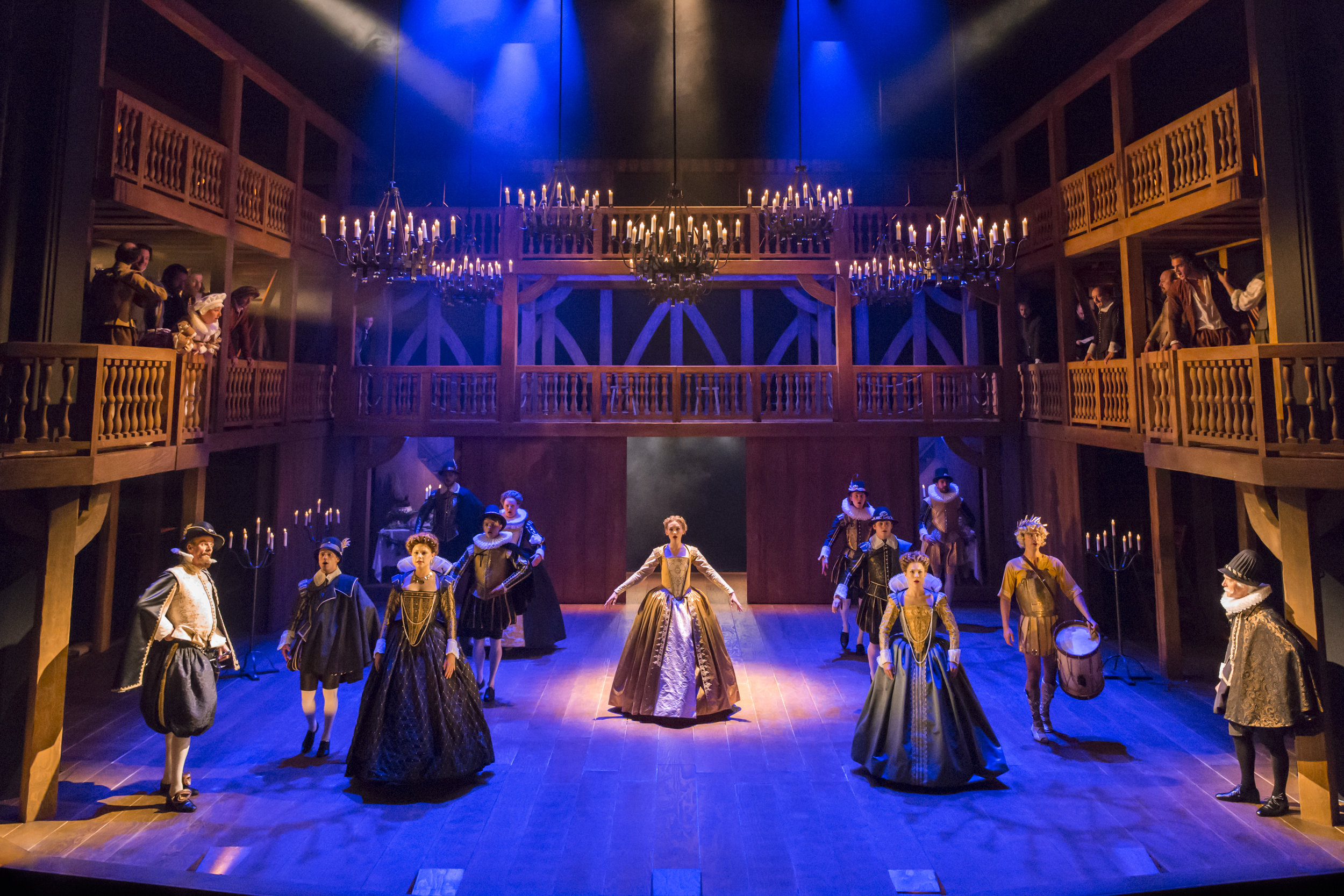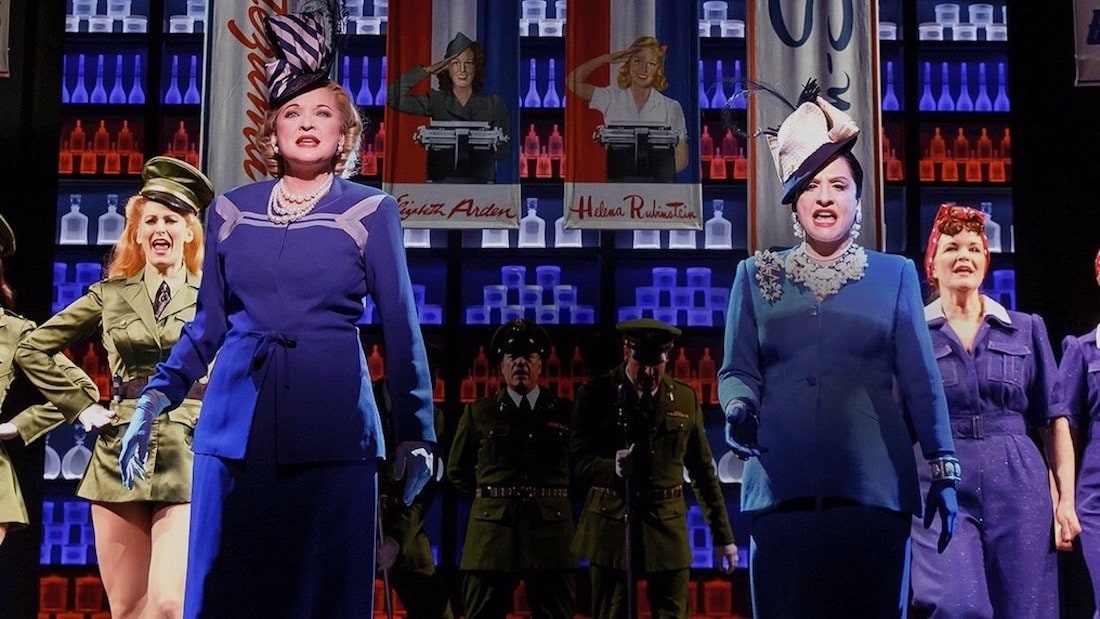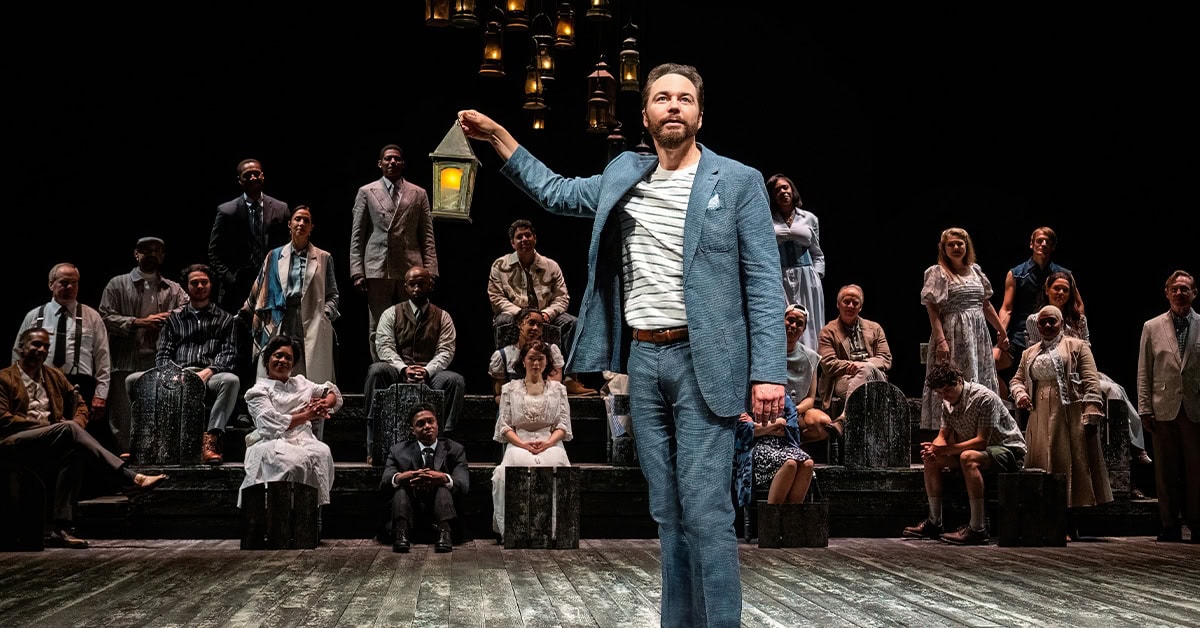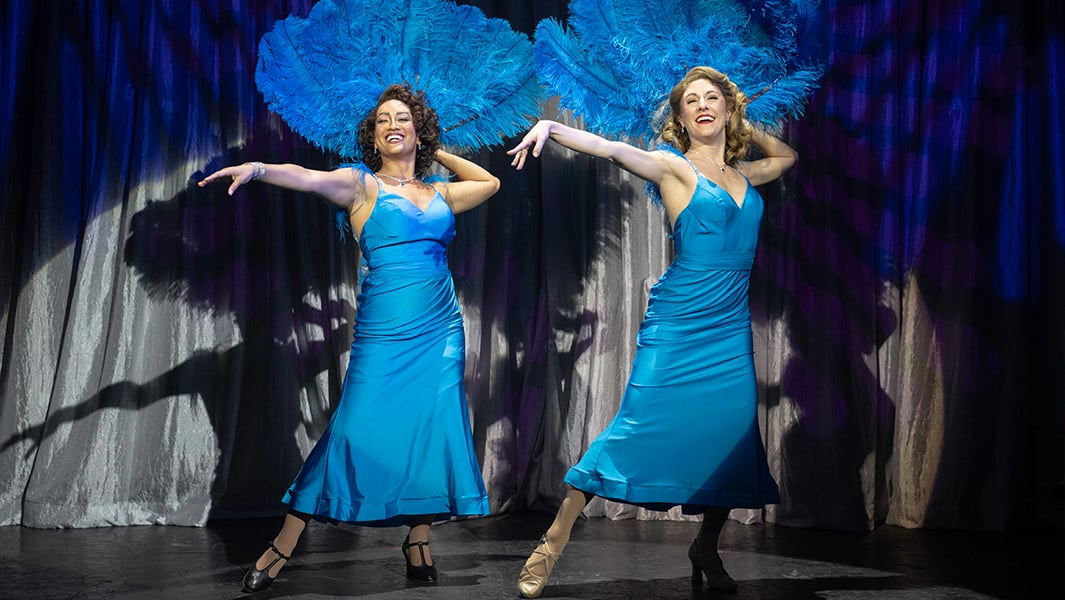
The following is an excerpt from the official Shakespeare in Love Production Handbook, which is a guide to all aspects of production from dramaturgy to staging and more. Download the complete Handbook for free on the Shakespeare in Love (US/UK) and Shakespeare in Love High School Edition (US/UK) pages!
…
William Shakespeare (1564-1616), the prolific poet and playwright, is often regarded in lofty terms as the greatest writer of the English language. His plays span as many genres as they do decades and are often regarded as brilliant reflections of humanity. That said, shockingly little is known about his life.
HUMANIZING THE BARD
In the late 1980s, screenwriter Marc Norman received a phone call from his son Zack, who was studying theatre at Boston College. While learning about Shakespeare, he realized that it might be interesting for his father to write a movie about Shakespeare as he was just starting out as a playwright. Norman found the idea compelling, but he struggled for a few years to figure out a way in.
His frustrations to come up with a suitable idea ultimately led Norman to a crucial point of connection. As professional writers, he and Shakespeare had something in common: acute writer’s block. The daunting state of being broke and devoid of ideas is an occupational hazard that afflicts even the best of writers. Norman thought it would be compelling to imagine Shakespeare during that unassured time in his life. Rather than viewing Shakespeare as an icon, Norman wanted to reclaim Shakespeare from stodgy academics and remind the world that he was a real person. “Let’s knock him off the pedestal and kick him around in the dirt for a while… But, let’s restore him to the pedestal at the end, maybe a little higher and with a better idea of why he’s there.”
Newly invigorated by this point of view, Norman set out to write a screenplay that imagines Shakespeare as a lusty playwright despairing and suffering creative paralysis. Not until he meets Viola, a free-thinking noblewoman who is promised in marriage to a stuffy aristocrat, does Will become inspired to write Romeo and Juliet. Things get complicated when he realizes that lead actor Thomas Kent is actually a cross-dressing Viola in disguise. Unable to resist their attraction, Will and Viola secretly begin a passionate romantic affair. At the same time, they must keep an even more dangerous secret: Viola acting on a live stage, which was a serious crime of decency in the time of Queen Elizabeth I. Inspired by these tricky realities, Will writes one of the greatest love stories of all time.
BRINGING THE BARD TO THE SCREEN
In 1991, Universal Pictures bought Norman’s screenplay for Shakespeare in Love. It is customary in the film world for multiple writers to take a pass at a screenplay before the movie is produced. As such, Universal enlisted the talents of Tom Stoppard, a gifted playwright who had famously reimagined Hamlet in Rosencrantz and Guildenstern Are Dead. Initially, Stoppard was wary of a project like this, as he found that people were all too eager to assume he was interested in stories “which might involve people who say forsooth and write with feathers.” However, Stoppard was drawn to the potential for comedy in the story. He wrote his own draft of the screenplay, most notably adding the subplot about Christopher Marlowe and bolstering the humor throughout.
Production was set to begin on the film in 1992. It was to be directed by Edward Zwick, and Julia Roberts was to star as Viola. However, the film fell apart when Daniel Day-Lewis declined to play Will and Roberts felt there was no suitable substitute. Given the amount of time and money the studio had already put into the film, Universal executives were reluctant to let the project die and held on to the screenplay for a few more years.
In 1996, Miramax, then a subsidiary of The Walt Disney Company, acquired the rights to produce Shakespeare in Love. Zwick was committed to another project at the time, so English director John Madden was brought on to helm the film. Newcomers Gwyneth Paltrow and Joseph Fiennes starred as Viola and Will, and Ben Affleck supported as cocky actor Ned Alleyn. Rounding out the cast were a host of formidable classically-trained actors: Geoffrey Rush as Philip Henslowe, Rupert Everett as Christopher Marlowe, Colin Firth as Lord Wessex, Imelda Staunton as Viola’s Nurse, and Judi Dench as Queen Elizabeth I.
Shakespeare in Love was released in December of 1998 to largely positive reviews. It earned a “Critic’s Pick” from The New York Times critic Janet Maslin, and Roger Ebert praised the film for the contemporary feel of the humor. It was also a hit with audiences, grossing over $289 million worldwide. The film was nominated for thirteen Academy Awards® and won seven, including Best Picture and Best Original Screenplay. In 2005, the Writers Guild of America ranked the screenplay the 28th greatest ever written.
SHAKESPEARE IN LOVE ONSTAGE
In 2010, due to a realignment of corporate strategy, Disney was planning to sell off the Miramax film library. However, Disney Theatrical Productions president Thomas Schumacher wished to retain the stage rights to Shakespeare in Love, as he believed it to be wonderful source material for a play.
Schumacher and Disney teamed with British producer Sonia Friedman and engaged Stoppard himself to adapt his screenplay for live stage. Ultimately deciding he would rather focus on new work than revisit a project, Stoppard recommended having someone else engage on the title. Olivier- and Tony®-winning playwright Lee Hall was brought on in 2012. Hall quickly realized the enormity of the project, recounting, “Delight turned to absolute panic when I realized that not only would I have to rewrite probably our greatest living playwright, I’d have to find a convincing theatrical form for an Oscar®-winning screenplay and I would be juggling an ensemble of around 30 actors.”
Ultimately, Hall retained about 90% of the film script in his adaptation. One of the most prominent changes that he made was embracing Shakespeare’s own verse. Poetry and heightened language can fall flat on the screen, and as such, the film had to be economical in quoting from Shakespeare’s work. With this limitation lifted for the stage, the play embraces Shakespearean language and uses it far more significantly than the film. Additionally, the love story between Will and Viola that is so central to the film takes a backseat in the play. Instead, the play focuses on Will’s journey toward becoming William Shakespeare and Viola’s toward becoming a great actor. The character of Christopher Marlowe is also expand
ed from the film, with Marlowe shifting from just a rival to both a friend and ghostly inspiration to Will.
Shakespeare in Love opened on London’s West End on July 22, 2014 at the Noël Coward Theatre to rapturous reviews. Prominent Shakespearian director Declan Donnellan was at the helm with costume and scenic designs by Nick Ormerod. Their theatre company, Cheek By Jowl, had notably produced numerous fresh and inventive takes on Renaissance plays and they vibrantly brought Shakespeare in Love to life, staging the play on a set resembling an Elizabethan theatre. Paddy Cunneen was commissioned to write music, which was integrated into the piece just as music would have been a component of a play in Elizabethan England. The West End production featured choreography by Jane Gibson, lighting design by Neil Austin, and sound design by Simon Baker. It was well-received by audiences and ran almost nine months.
ALL THE WORLD’S A STAGE: SHAKESPEARE IN LOVE BEYOND THE WEST END
The West End production of Shakespeare in Love was extraordinarily large for a play, featuring a cast of 28. The team behind the play went to work to figure out if it was possible to present a smaller version, and in April of 2016, a production (again directed by Declan Donnellan) opened at Canada’s Stratford Festival featuring a cast of 21.
Shakespeare in Love has since been produced at the Oregon Shakespeare Festival and across the U.S., as well as around the world. It has been particularly popular at Shakespeare festivals given its light take on the Bard and countless historical and literary references. During the 2017-2018 season, American Theatre magazine named Shakespeare in Love the most-produced play in America, excluding Shakespeare’s own works.
Centuries after his lifetime, William Shakespeare is still regarded as the greatest writer of the English language. Just as his plays and poetry delight and inspire audiences, readers, and theatre-makers around the world, so too does an imagined version of his life through Shakespeare in Love.
…
To purchase your copy of Shakespeare in Love, visit the Concord Theatricals website in the US or UK, and to learn more about licensing a production, visit the US or UK website!
To purchase your copy of Shakespeare in Love (High School Edition), visit the Concord Theatricals website in the US or UK, and to learn more about licensing a production, visit the US or UK website!
Photo Credit: 2014 West End production of Shakespeare in Love (Johan Persson).

The Truth Behind… War Paint

Shows About the Spirit of Community

